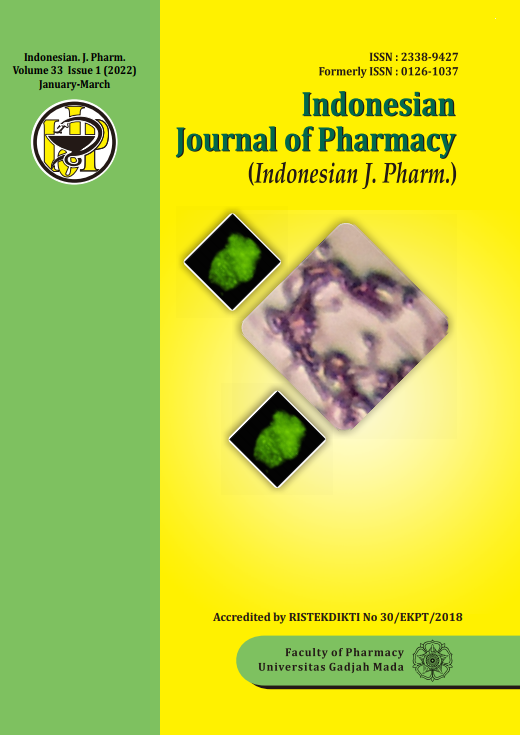The Influence of Implementation of Health Promotion Model Precede-Proceed Towards Growing Child, Nutritional Status, and Quality of Life of Children
Abstract
Quality of life (QoL) is a broader concept than merely measuring morbidity and mortality. The quality of life of the child is an important factor in determining the human resources (HR) in the future and requires serious attention. District worthy of children is a comprehensive structure based on the study that PRECEDE-PROCEED model principle to assess health needs to design, implement, and evacuate health promotion programs. This research aims to determine the influence of implementation health promotion model PRECEDE-PROCEED towards growing children, nutritional status, and quality of life in children's. This research is a quantitative observational study using research design of retrospective cohort studies. The target population is all toddlers aged 2-4 years. The study of the population of this study is all toddlers aged 2-4 years old who reside in the village worthy of children (districts exposed) and ordinary villages (groups not exposed) in the region of Sleman regency. Sampling using multistage random sampling techniques, 350 respondent were district exposed and not exposed. The results showed that the quality of life of the children was directly affected by growth children (b=0.043;SE=0.092;p<0.001), nutritional status (b=0.01;SE=0.126;p<0.001), mother's education (b=0.112;SE=0.031;p<0.001), Number of siblings (b=0.043;SE:0.058,p<0.001), and family consultation center (b=0.261;SE=0.058;p<0.001). Conclusion of this study is QoL of the children is directly affected by growth children, nutritional status, mother's education, number of siblings, and family consultation center.
References
Alfianrisa. (2017). Factors Associated with Exclusive Breastfeeding: Application of Precede-Proceed Model and Theory of Planned Behavior. Journal of Maternal and Child Health 2, 2(1), 42–53. https://doi.org/https://doi.org/10/26911/thejmch
Babaei, H. (2017). Bonding, Bridging and Linking Social Capital and Empowerment Among Squatter Settlements in Tehran, Iran. World Applied Sciences Journal, 1818–4952(17), 119–126.
Profil Kesehatan Kabupaten Sleman Tahun 2019, (2019).
Bhisma Murti. (2015). Epidemiological Research Principles and Methods. Gadjah Mada University Press.
Dehdari T, et al. (2019). Planning and Evaluation of an Educational Intervention Program to Improve Life Quality in Patients After Coronary Artery Bypass Graft-Surgery According to PRECEDE-PROCEED Model. Journal Birjand Univ Med, 15(4), 27–37.
Fisher, B. and Chanan, G. (2015). Social Action For Health Gain: The Potential Of Community Development. British Journal of General Practice, 65(631), 97–98. https://doi.org/https://doi.org/10.3399/bjgp15X683641
Green, LW and Kreuter, M. (2015). Health Program Planning: An Educational and Ecological Approach. New York: Mc Graw-Hill.
Huang. (2015). The Linkage Between Pediatric Quality Of Life And Health Conditions: Establishing Clinically Meaningful Cut Off Scores For The Pedsql. NIH, 12(5), 773–781. https://doi.org/https://doi.org/10.1111/j.1524-4733.2008.00487.x
Matin H. (2014). Relationship Between the Educational Stage of PRECEDE Model and Quality of Life Improvement in the Elderly Affiliated with Tehran Culture House for the Aged. Iran Journal Diabetes Lipid Disord, 13(6), 469–478.
Mcguire S. (2014). Centers for Disease Control and Prevention. State Indic Rep Phys Act. https://doi.org/10.3945
Mexitalia M, S. H. (2014). Differences in Nutritional Status, Physical Fitness, and Quality of Life for School Children in Rural and Urban Areas. Journal Nutritional. https://doi.org/https://doi.org/10.22146/ijcn.18216
Muhaimin T. (2016). Measuring Children’s Quality of Life. National Public Health Journal, 5(2), 51–55.
Nur, S., Yumni, H. and Susanto, T. (2014). Quality of Life in Children. Implement Sci, 39(1), 1–15. https://doi.org/https://doi.org/10.4324/9781315853178
Nur, S., Yumni, H. and Susanto, T. (2017). International Journal of Nursing Sciences Structural Model of Factors Relating to the Health Promotion Behavior of Reproductive Health Among Indonesian Adolescents. International Journal of Nursing Sciences, 4(4), 367–373. https://doi.org/https://doi.org/10.1016/j.ijnss.2017.10.001
Payot A, B. K. (2017). The Quality of Life of Young Children and Infants with Chronic Medical Problems: Review of the Literature. Curr Probl Pediatr Adolesc Health Care, 41(4), 91–101. https://doi.org/https://doi.org/10.1016/j.cppeds.2010.10.008
Petersen PE, B. P. (2012). Perontal Health and Global Public Health. Peridontology.
Pradono et al. (2017). Quality of Life of Indonesian People According to the International Classification of Functioning, Disability, and Health (ICF) and the Factors that Influence It. Research and Community Center for Ecol and Health Status in Jakarta. International Journal Of Healtcare Research.
Safari M, et al. (2012). Evaluation of an Educational Intervention Based on PRECEDE PROCEED Model Toward Lifestyle Improvement Among Adolescents. Daneshvar Med, 19(98), 1–11.
Sitaresmi MN, Mostert S, Gundy CM, V. A. (2018). Health-Related Quality of Life Assessment in Indonesian Childhood Acute Lymphoblastic Leukemia. BMC Health and Quality of Life Outcomes, 8(1), 1–8. https://doi.org/10.1186 / 1477-7525-6-96
Gaspar, T., Ribeiro, J. P., de Matos, M. G., Leal, I., & Ferreira, A. (2012). Health-related quality of life in children and adolescents: subjective wellbeing. The Spanish journal of psychology, 15(1), 177–186. https://doi.org/10.5209/rev_sjop.2012.v15.n1.37306
World Health Organization. (n.d.). Country Health System Profile: India - Health Education and Promotion. 2019. http://www.searo.who.int/en/Section313/Section1519_10854.htm








